Upgrading Your Business Computers to Windows 10? Read This First
by Stephanie Faris on Monday, August 31 6:00
The latest version of Microsoft Windows is out and consumers have been advised that this will be the last full upgrade of the operating system. Once installed, Windows 10 will upgrade automatically, grabbing the latest features when regular updates are pushed down. For businesses who have endured multiple versions of Microsoft s operating systems, the news of a new release brings hesitation. A new release can sometimes mean incompatibilities and bugs that take years to work out.
But since Windows 10 will become the final full release, eventually all businesses will need to consider upgrading. The question then becomes, should you upgrade now or wait? If you re contemplating upgrading, here are a few things to consider.
Can You Upgrade?
Microsoft s announcement that the upgrade would be free to owners of Windows 7 and 8 excluded businesses. However, many business users have free upgrade privileges through their Software Assurance contracts. You ll likely be prompted to upgrade if your version is eligible but if you have questions, review your agreements and check with a Microsoft customer service rep. Microsoft promises one-on-one help for users upgrading to Windows 10 through its Answer Desk.
To upgrade, your device will need to be running either Windows 7 SP1 or 8.1. You ll also need to run all updates and make sure you have at least 16 GB free for 32-bit or 20 GB if you plan to download the 64-bit version. Once you re ready, click on the Windows icon in the bottom-right corner of your screen and reserve your free upgrade. Microsoft will download the upgrade to your machine and notify you by email when it s ready.
Should You Upgrade?
Perhaps a more important question than, Can you upgrade? is, Should you upgrade? If you re running Windows 7 or 8.1, you may find that your current operating system is perfectly fine, especially considering users have already been experiencing problems with the upgrade. As with many Windows releases, the product is also precarious in its early days, which will leave you dealing with numerous issues that Microsoft still either isn t aware of or hasn t completely worked out yet.
Of course, if you re brave enough to try it out, you ll be able to try out some of the features customers are already excited about. The fact that the start menu returns with Windows 10 is enough reason to get excited, especially if you missed it after upgrading to Windows 8. One popular feature is enhanced window control, giving users the ability to see multiple open applications in split-screen view. You ll also get an early peek at Microsoft s new web browser, Edge, which has Cortana built in.
Windows 10 is an exciting new operating system update that promises to bring back the essential things customers missed in Windows 8. But if you re concerned about issues related to a brand new operating system, it might be wise to wait until Windows 10 has been on the market a while before upgrading. As exciting as it can be to be an early adopter, however, Microsoft often spends the early months of a new operating system release working out all of the problems it missed during its pre-release testing.
